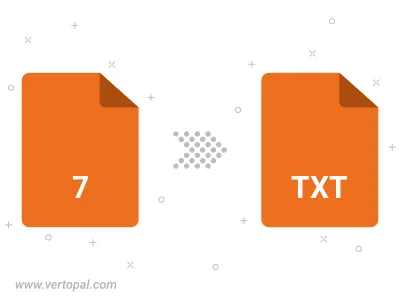Convert 7 (Man Page) to TXT COMMONMARK
Convert 7 (Man Page) documents to TXT COMMONMARK format, edit and optimize documents online and free.

The 7 file extension refers to Unix manual pages (man pages) in Section 7 of the Unix manual, which covers miscellaneous system information. These files, such as "boot.7", provide documentation on various system components and conventions. Historically, man pages have been a fundamental part of Unix-like systems, offering essential guidance for system administrators and developers. To view a 7 file, use the "man" command, e.g., "man boot".
The TXT file extension is associated with CommonMark Markdown Language, a simplified markup language designed for easy readability and writability. Markdown is widely used in documentation, blogging, and formatting readme files in software development. Introduced in 2014, CommonMark aims to standardize Markdown's diverse implementations. Its clarity and simplicity make it a preferred choice for developers and technical writers seeking to maintain clean, structured documents.
Start uploading a 7 (Man Page) document by clicking the Choose File button or drag & dropping your 7 (Man Page) file.
Check the file preview quickly and use 7 (Man Page) to TXT COMMONMARK tools if you need to change the conversion settings.
Once the convert is complete, you can download the final TXT COMMONMARK file.

To change 7 format to TXT COMMONMARK, upload your 7 file to proceed to the preview page. Use any available tools if you want to edit and manipulate your 7 file. Click on the convert button and wait for the convert to complete. Download the converted TXT COMMONMARK file afterward.
Follow steps below if you have installed Vertopal CLI on your macOS system.
cd to 7 (Man Page) file location or include path to your input file.Follow steps below if you have installed Vertopal CLI on your Windows system.
cd to 7 (Man Page) file location or include path to your input file.Follow steps below if you have installed Vertopal CLI on your Linux system.
cd to 7 (Man Page) file location or include path to your input file.